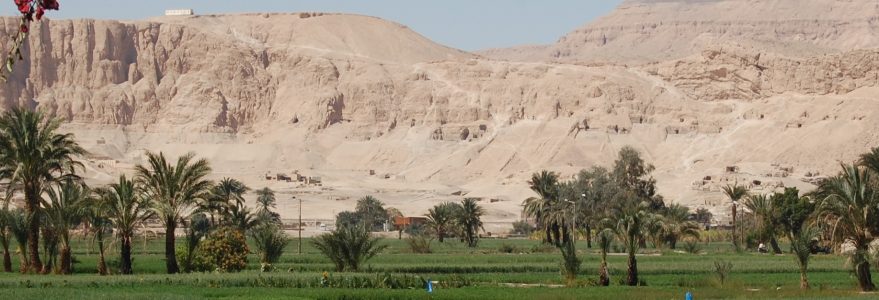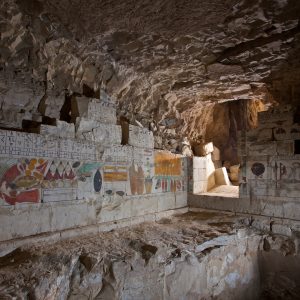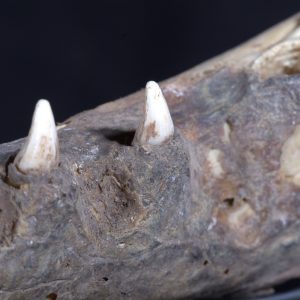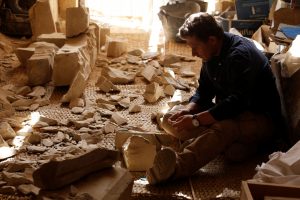The expedition from the Polish Centre of Mediterranean Archeology discovered nine cloth-wrapped crocodile heads in mortuary complexes in the Theban Necropolis. It is the first of its kind discovery of reptiles’ remains within the tombs of people. The research work is conducted under the Polish Archeological Expedition to North Assasif “Asasif Project”.
The research team of the Polish Centre of Mediterranean Archeology, University of Warsaw, led by Dr Patryk Chudzik, investigated a vast archeological dump left by the New York Metropolitan Museum of Art Egyptian Expedition. In 1922, American archeologists removed rubble and debris from the tombs and left them in the courtyards nearby. Among the rubble dump, remains of nine crocodiles were excavated.
As Dr Patryk Chudzik of the Polish Centre of Mediterranean Archaeology says, “A thorough analysis within one of the rubble damps provided proofs that the crocodile heads had been primarily placed in burial chambers. Thus, they must have been put there during funeral ceremonies four thousand years ago, at the period of the Middle Kingdom”.
Crocodile cult
Archeological and epigraphic works covered the area of two mortuary complexes in the valley of North Asasif, Western Thebes (Luxor). The first tomb belonged to Chancellor Khety, one of the most prominent high-ranking officials at the court of Mentuhotep II (2055-2022 BC), while the latter is attributed to a vizier at the pharaoh’s court. The presence of the reptile remains within the officials’ tombs is quite unusual and it indicates a high position of the deceased.
The investigated tombs revealed skeletal parts of the crocodile skeleton, including fragments of the skull and mandible, loose teeth, and osteoderms. The conducted analysis showed that the remains came from young Nile crocodiles (Crocodylus niloticus) measuring around five meters. This species is considered the largest and most dangerous of all the crocodillians throughout sub-Saharan Africa.
This unique discovery of unmummified remains of crocodiles is of significant importance. Usually, skeletal parts did not come from sacred animals, which used to be held at the ancient Egyptian temples. The explored animals could not be associated with the crocodile cult.
“In the face of thousands of crocodile mummies found throughout Egypt, the discovery of unmummified remains of these riverine creatures, restricted to the head and skin, is quite extraordinary. In fact, remains of sacred reptiles were buried in specially prepared catacombs,” Dr Patryk Chudzik of the PCMA explains.
Being conducted since 2013, ”Asasif Project” has covered the region of North Assasif, Western Thebes, Egypt. Researchers from the Polish Centre of Meditarranean Archaeology , University of Warsaw, investigate nine mortuary complexes that date back to the Middle Kingdom. The aim of this project is to reconstruct the complex history of Western Thebes, and functioning of its necropolis in the Middle Kingdom, in particular.
The results of the study on crocodile remains in the tombs of Egyptian nobles are published in the Journal of African Archaeology:
Patryk Chudzik, Urszula Iwaszczuk, “A Crocodile Spirit, Crocodile-Faced”: Discovery of Crocodile Remains in the Early Middle Kingdom Tombs of the North Asasif Necropolis in Western Thebes (Egypt), Journal of African Archaeology (2022), DOI: https://doi.org/10.1163/21915784-bja10016








